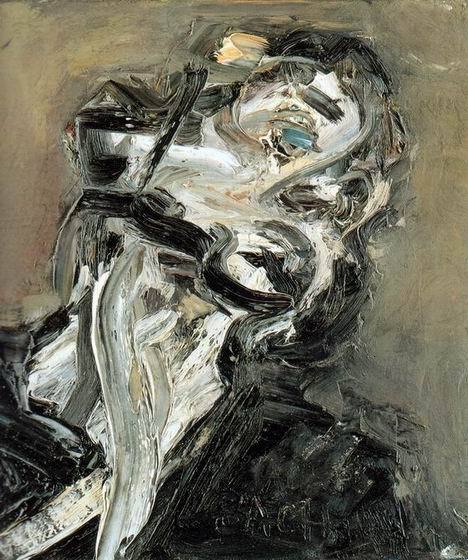Last week we had a trip to the Saatchi gallery. I’ve got to say I was a little disappointed, not with the work on show, but with the way it was exhibited. I don’t know, perhaps artists want their work to be displayed in cold, white, clinical box-like rooms, but I find it makes me feel uncomfortable and detracts from the experience of whatever piece I’m looking at. I find I can’t get involved in a piece in the same way. It’s hard to really take in a piece when you’re feeling self-conscious and exposed. But that’s a rant for another day.
Anyway, there were some really interesting pieces. The current exhibition is looking at
contemporary sculpture, and there seems to be a bit of a trend towards viscerally unfinished-looking pieces, full of drips and raw edges. I’m putting a few notes and pictures of a few of the pieces that really struck me below. All of the pictures are ones I took myself on the day, the names of the artists are included above, with links to their pages on the Saatchi website. The pictures are purely to illustrate my notes, no copyright infringement is intended.
There’s something really disturbing about these. Carnage as sculpture. It reminds me of some of the darker aspects of human nature, the morbid curiosity that makes people stare at horrific car accidents as they drive by. Putting such horrific accidents in a gallery environment says something really interesting about that habit.
These are so visceral, particularly the darker red one. The dripping wax has a raw, gory feel to it that’s quite unsettling, but the architectural forms evoke urban landscapes.
Seeing such cartoony, exaggerated forms in three dimensions is interesting. To me it highlights the differences between reality and caricature. They focus on and exaggerate features that have been fetishised by male sculptors for centuries, which gives them a quirkily feminist edge. Plus, they’re really amusing!
The white eyes are really creepy! I love the unfinished foam, it looks as though it’s impaled the figures.
I like the way the copper sulphate seems to be growing across the models like some sort of alien mould. The models themselves look rather like the cut-out ones you can buy, which gives these pieces a subversive repurposed feel.
I like the hunched pose, it makes it seem as though the figure is bent under some incredible burden. The sketchily drawn-on expression emphasises this feeling. The unfinished quality of the drawing and the roughly formed plaster, give the piece a primordial feel, as though the figure has stepped out half-formed.
Another disturbing piece. The detail in the lower body and torso contrast with the vague, almost Lovecraftian quality of the mass that replaces the figure’s head. The pale colouring of the flesh tones gives it a sickly, dead quality. The way the chest has caved in adds a brittle quality, but there’s a flow to the tendrils that fall down between the arms. Really interesting piece.
An abstract figure made of fur and reflection. Really interesting use of texture. It seems sort of tactile (though obviously I didn’t touch it!). There are little bits of fool’s gold on the mirrored steps, which makes me think of a journey through life, drawn to things that are valueless and missing things that are importance.
Another piece that can best be described as "visceral". A mixture of explicit sexuality and violent dismemberment (I love the details of the exposed spine, shattered heads and swirling innards!) but with pale, almost pastel colours and exposed plaster. I like how the treatment of the plaster reflects the violent energy of the scene, and how the figures are not quite human, with their wings, multiple arms and shattered bodies. They seem more like personifications of sexual energy than human figures.
I’m not normally much of a one for large pieces, but these definitely had an impact in real life. They tower over you at about one and a half times life size. The level of detail in the face and hands is amazing, and I like the combination of modern clothing with the traditional concept of the giant (complete with walking stick).
This reminds me of early Mediterranean figurines. In the Bronze Age, Cypriot potters made a lot of figurines of bulls that have a similar shape, though this is much larger and has a (deliberately) cruder finish. Apparently it's based on traditional figurines from Mali, it certainly has an earthy ethnic feel.
I love the use of negative space here. Though the construction is fairly simple, being able to see between the struts to the lights beyond gives a sense of complexity and depth.














































